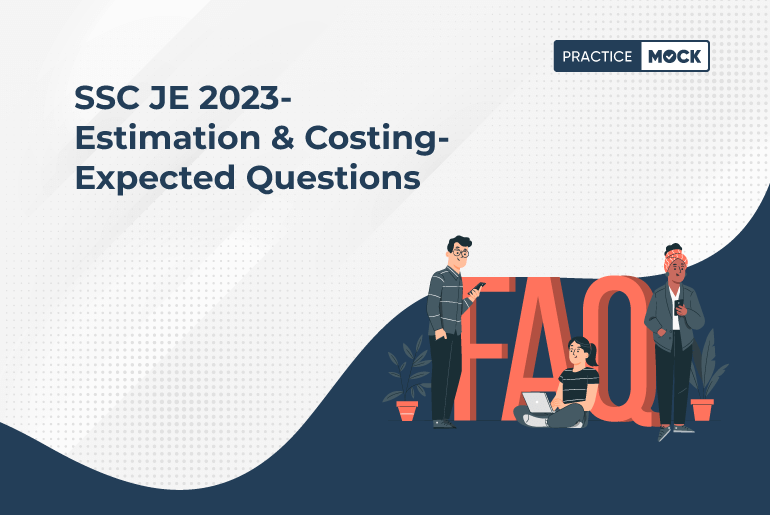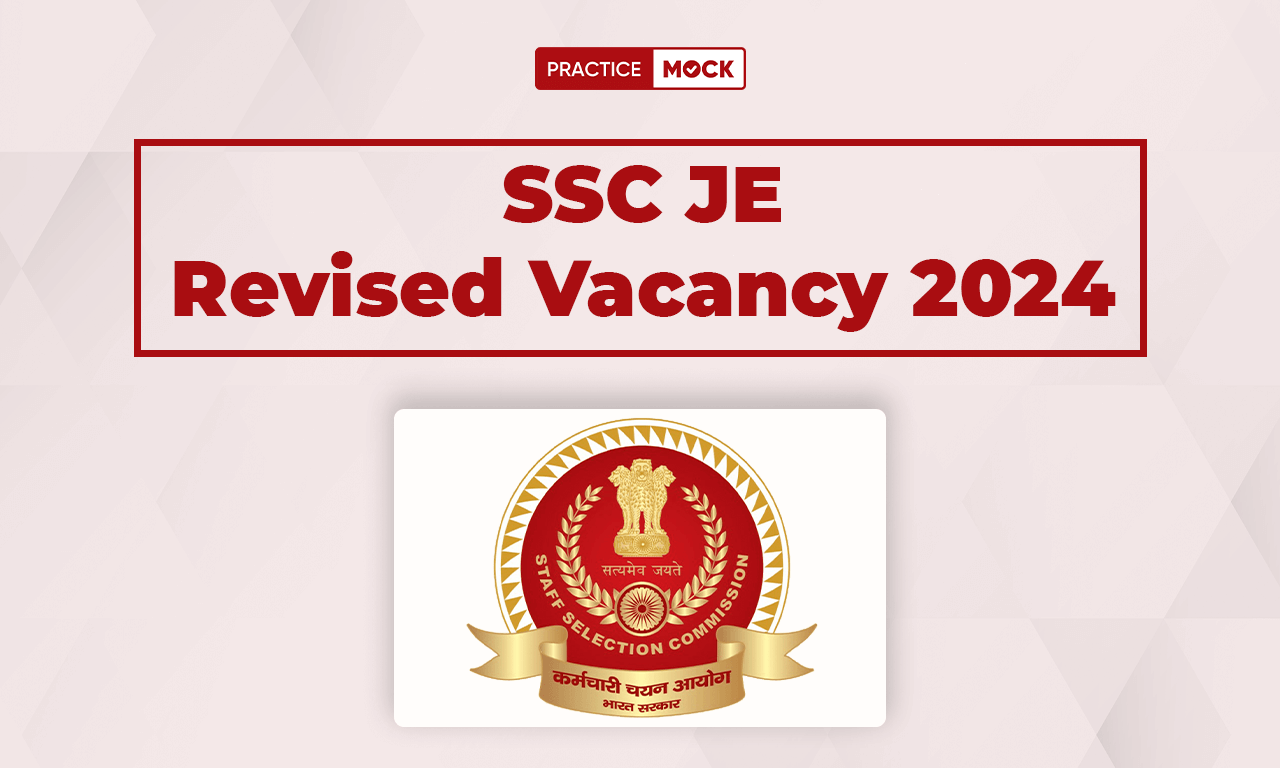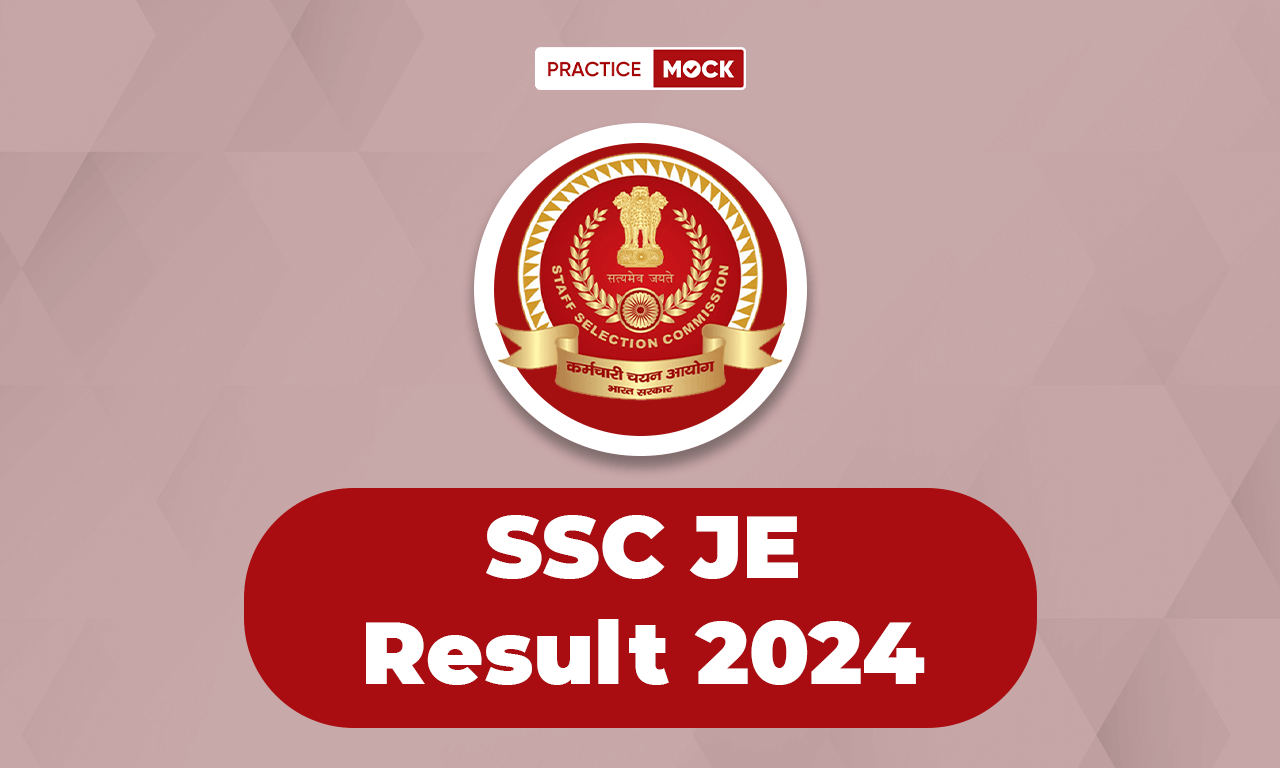

Estimation and costing is a crucial topic in the SSC JE (Junior Engineer) 2023 exam, assessing candidates’ understanding of project cost estimation and budgeting in civil engineering. It involves calculating material quantities, labor costs, overheads, and more for construction projects.
In this blog, we’ll supply you with the expected questions and a free mock test to test your skills and get the best analysis for quick improvement.
SSC JE 2023 Mock Test for Ultimate Practice
FREE SSC JE Civil Engineering 2023 Mock Test: Are You Ready for the Challenge? Find Out Now!
SSC JE 2023-Estimation & Costing-Expected Questions
1. What would be the total cost (in Rs) of a proposed building, which has a covered area of 200 m², including a rear courtyard measuring 5m x 4m, if the current plinth area rate for similar buildings is Rs 1000 per square meter?
(a) 180000
(b) 212500
(c) 162500
(d) 375000
Sol-(a)
1. Calculate the plinth area excluding the courtyard:
Plinth Area = Covered Area – Courtyard Area
Plinth Area = 200 m² – (5 m x 4 m) = 200 m² – 20 m² = 180 m²
2. Determine the cost based on the plinth area rate:
Cost = Plinth Area x Plinth Area Rate
Cost = 180 m² x Rs 1000/m² = Rs 1,80,000
So, the cost of the proposed building is Rs 1,80,000.
2. Which one of the following is excluded from the floor area calculation?
1. Clear coverage area
2. Area of the walls
3. Door sills
4. Sills of the windows
Options
(a) 1 and 3
(b) 2 and 3
(c) 2, 3 and 4
(d) 2 and 4
Sol-(c)
Floor area: The floor area is the plinth area less than area of walls. In the calculation of wall area the thickness of wall shall be inclusive of finishing and dado if the height of such finish is more than 1 m from floor finish.
The following shall be included in the wall area.
(i) Doors and various openings within the wall.
(ii) Intermediate pillars, supports, or any obstructions found inside the plinth area, regardless of their positioning.
(iii) Wall plaster exceeding an area of 300 cm².
(iv) Flues contained within the wall.
(v) Protruding fireplaces in living or bedroom walls.
(vi) Built-in cupboards, wardrobes, and shafts located within a height of 2.2 meters from the floor.
3. Calculate the quantity of the sand required for 10 cubic meter brickwork with cement mortar (1:3)
(a) 1.38
(b) 1.5
(c) 1.8
(d) 2.2
Sol-(d)
The effective size of modular brick (19cm × 9cm × 9cm) in a brickwall is 20cm × 20cm × 10cm
∴ Quantity of wet mortar in 1m3 of brickwork
= [((0.2×0.1×0.1)- (0.19×0.9×0.9))/((0.2×0.1×0.1))]×1
= 0.2305m3
Quantity of wet mortar in 10 m3 of brickwork
= 0.2305 × 10
= 2.305 m3
For mortar of 1:3, quantity of sand in 1.844m3 of dry mortar.
=3/4 × 2.305 = 1.729 m^3
Since the volume of wet mortar is approximately 1.27 times the volume of dry mortar.
Hence quantity of sand required = 1.27× 1.729
= 2.196vm3
= 2.2 m3
4. Determine the amount of damp proof course needed for constructing a room with internal dimensions of 4 meters by 3 meters, a wall thickness of 250 mm, two windows measuring 2 meters in width and 1.5 meters in height, and one door measuring 1.5 meters in width and 2.2 meters in height. The room’s height is set at 4 meters, and the damp proof course has a thickness of 2.5 cm.
(a) 8 × 107 mm3
(b) 14 m with a width of 250 and thickness of 2.5 cm
(c) 3.375 m² with a thickness of 2.5 cm
(d) 7.8125 × 104 cm3
Ans: (c)
The total length of central lines of all walls of room= 15 m
| Particulars of item and details of work | No. | Length (m) | Breadth (m) | Height of Depth (m) | Quantity (m2) |
| Rooms | 1 | 15 | 0.250 | – | 3.75 |
| Deduct door sills | 1 | 1.5 | 0.25 | – | 0.375 |
| Net Total | 3.375 m2 |
5. A building owner allocates an annual sinking fund of 1,200 rupees, derived from the rental income of the building. After 30 years, he intends to use this fund to reconstruct a portion of the building. Given that the bank’s interest rate is 7%, what will be the total amount at his disposal after the 30-year period?
Note: Take 1.0730 = 7.612
(a) 85,6250
(b) 1,13,353
(c) 78,9650
(d) 75,3240
Sol-(b)
where,
A = money accumulated
P = Periodic contribution = 1200 Rs
r = Interest rate = 7%
n = Number of year = 30 years
A = 113352.94 Rs
SSC JE 2023-Estimation & Costing-Expected Questions
A free mock test tailored for SSC JE 2023 can significantly boost your preparation by:
1. Assessment and Benchmarking: Mock tests help evaluate your current knowledge and identify areas that need improvement, establishing a baseline for your preparation.
2. Familiarity with Exam Format: They simulate the actual exam, providing insight into the exam pattern, question types, and time management, allowing you to adapt your strategy accordingly.
3. Content Understanding and Application: Mock tests expose you to a variety of questions, enabling you to apply theoretical knowledge to practical scenarios, which is crucial for Estimation & Costing questions.
4. Identifying Weaknesses: By reviewing your performance, you can pinpoint weak areas and concentrate your study efforts to enhance your understanding and accuracy.
5. Building Confidence: Regularly attempting mock tests builds confidence, reducing exam anxiety and helping you approach the actual SSC JE exam with a positive mindset.
Conclusion
In summary, a free mock test tailored for SSC JE 2023 provides an effective tool for self-assessment, enhancing exam readiness and enabling a focused and strategic approach towards mastering Estimation & Costing and other crucial subjects for the SSC JE exam.
Recent Posts
IBPS RRB Notification 2025, PO & Clerk Exam Date Out, Check All Upcoming Events
The IBPS RRB Notification 2025 is expected to be released in June 2025. candidates can…
How to do Fast Calculations with Vedic Maths for RRB PO 2025 Exam
In this article we are providing the preparation Strategy to do Fast Calculations with Vedic…
Top 5 Puzzles to Practice for RRB PO 2025 Exam, Check Strategies to Solve Question
Here we are providing the Top 5 Puzzles to Practice for the RRB PO 2025…
Most Asked Compound Interest Questions for RRB Clerk 2025 Exam
In this article we have shared the most asked compound interest questions for the RRB…
SSC CGL Question Paper Free PDF Based On Previous Year
This blog has provided the SSC CGL Question Paper Free PDF Based On Previous Year.…
How to Choose the Right Course for RBI Grade B Exam Preparation
Confused about RBI Grade B prep courses? Discover 5 smart tips to choose the best…


